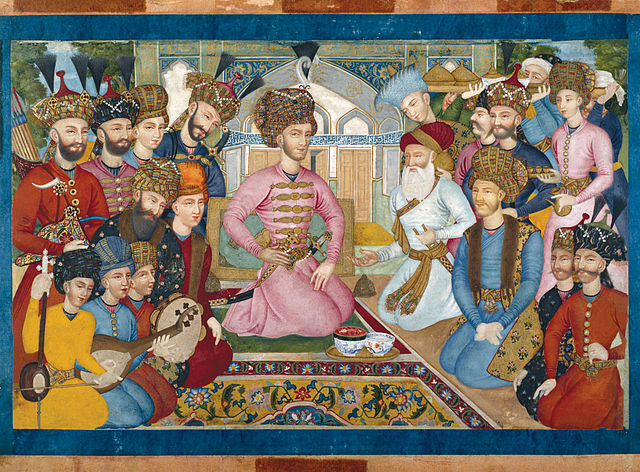Jean Chardin, born Jean-Baptiste Chardin, and also known as Sir John Chardin, was a French jeweller and traveller whose ten-volume book The Travels of Sir John Chardin is regarded as one of the finest works of early Western scholarship on Safavid Iran and the Near East in general.
Jean Chardin
Frontispiece of Voyage du Chevalier Chardin en Perse et autres lieux de l'Orient, 1739.
Cuneiform inscriptions recorded by Jean Chardin in Persepolis in 1674 (1711 edition)
Chardin's memorial in Westminster Abbey, by Sir Henry Cheere
Abbas II was the seventh Shah of Safavid Iran, ruling from 1642 to 1666. As the eldest son of Safi and his Circassian wife, Anna Khanum, he inherited the throne when he was nine, and had to rely on a regency led by Saru Taqi, the erstwhile grand vizier of his father, to govern in his place. During the regency, Abbas received formal kingly education that, until then, he had been denied. In 1645, at age fifteen, he was able to remove Saru Taqi from power, and after purging the bureaucracy ranks, asserted his authority over his court and began his absolute rule.
Abbas II (right) and a minister. 19th-century Indian artwork made after a Safavid original
A painting of Abbas II while negotiating with the Mughal ambassador.
Painting from the Qajar era, perhaps anachronistically depicting the Safavid victory over the Russian forces in 1651–1653
Silver coin of Abbas II, dated 1658/9 and struck at the Ganja mint. As a part of his plan to increase the state's revenue, the grand vizier Mohammad Beg had the gold coins prohibited, therefore flooding the realm with silver coins.








